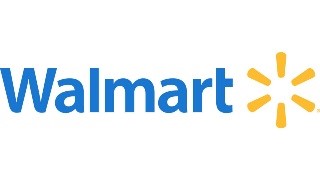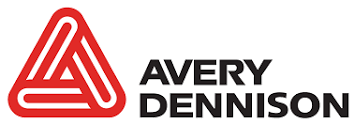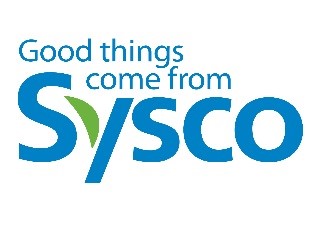Recessions and the Stock Market
A growing number of economists and CEOs are warning of a possible recession given rising interest rates and widespread inflation, including commodity prices. Mark Zandi, an economist with Moody’s Analytics, sums it up best: “Historically, when inflation is high and the Federal Reserve is working hard to quell it, recessions happen more often than not.” What is a recession, how long do they last, and how do equity markets respond?
The National Bureau of Economic Research (NBER) defines the business cycles in the United States and is tasked with declaring the beginning and the end of a recession. It defines a recession as: “[A] significant decline in economic activity spread across the economy, lasting more than a few months, normally visible in real Gross Domestic Product (GDP), real income, employment, industrial production and wholesale/retail sales.” A common statistical definition is two consecutive calendar quarters with negative real GDP.
The good news for investors is that every previous bear market on record has been followed by a recovery and a new bull market.
There is usually a lengthy gap between when a recession occurs and when it is reported. It is possible that we are currently in a recession as the NBER does not even attempt to declare a recession in “real” time. For the five recessions that have begun since 1979, the NBER has taken an average of eight months to declare that a recession has started, and 15¼ months to decide that it had ended. Since 1945, recessions have lasted on average 10 months. However, all recessions are not the same, and the length and frequency of recessions can vary. Prior to the self-induced COVID-19 recession of 2020, the U.S. economy set a record by starting and ending a decade without a recession for the first time ever.
Market declines, unfortunately, are a periodic part of investing. From 1945 through 2020, the U.S. was in a recession 14% of the time. The good news for investors is that every previous bear market on record has been followed by a recovery and a new bull market. Stock market recoveries often include strong rallies that emerge without warning. In the past five bear market recoveries, the Standard and Poor's (S&P) 500 rose by an average of 25% in the first three months of a new bull market. Following the March 23, 2020 low from the COVID-19 sell-off, the market delivered a return of more than 30% in just three months.
How does the market react to recessions? The stock market generally is recognized as a leading indicator of economic cycles. It generally moves before the aggregate economy does, in both upswings and downturns. If investors expect future earnings will increase, current prices will go up. However, the markets are volatile in the short-term, and it is difficult to determine direction on a day-to-day basis. Is an up day, or week, a reliable signal of a new expansionary phase or just noise? A common joke told by finance professors is that the stock market has predicted 10 of the last six bull markets.
All of this suggests that timing the market is a difficult, if not an impossible task. Conflicting signals, emotions, inconclusive data and the delay in identifying economic downturns and recoveries are challenges to predicting the market’s inflection points. Thus, for most investors, staying invested in a downturn, and even adding to positions opportunistically, is the best course of action. If the future is anything like the past, financial markets will recover and produce positive returns for patient, diversified investors. Understanding that downturns are an inevitable part of investing can save one from making decisions based on emotions, while keeping the investor focused on meeting long-term goals.
June 30, 2022
COMPANY COMMENTS
Comments follow regarding common stocks of interest to clients with stock portfolios managed by Delta Asset Management. This commentary is not a recommendation
to purchase or sell but a summary of Delta’s review during the quarter.
Walmart, Inc. { WMT }
Founded in 1962, Walmart began with a single store in Rodgers, Arkansas. Today it has grown to more than 11,400 retail stores in 26 countries serving more than 240 million customers a week. The company is the world’s largest retailer operating in a variety of formats, including discount stores, neighborhood markets, supercenters and grocery stores as well as e-commerce websites in 27 countries. Walmart, with $559 billion in annual sales, possesses tremendous scale and leverage to extract the most favorable terms possible from suppliers and vendors. The company is very adept at using its cost advantage to maintain low price leadership and keep constant pressure on competitors.
With unrivaled purchasing power, scale, brand equity and a growing e-commerce platform, Walmart is currently the only American retailer that can compete on a comprehensive basis with Amazon’s retail offering. The company offers a wide variety of fulfillment options for transactions made through either physical or digital channels with its large store footprint, deep vendor relationships and trusted brands. With its purchasing power providing cost leverage to keep prices low, Walmart is a formidable omnichannel retailer and remains the most valuable outlet for top manufacturers in terms of dollar sales.
Walmart has redirected capital expenditures toward the development of its global omnichannel capabilities. The company is now the No. 2 online retailer behind Amazon. Walmart is better positioned than other traditional retailers with its already efficient operations, bulk procurement and dense network of stores, which also serve as convenient distribution outlets. As of 2021, the company had approximately 3,750 pick-up locations and 3,000 delivery locations. Company stores are located within 10 miles of 90% of the U.S. population, and Walmart has roughly 2.5 times the store count of Target. The company’s “click and collect” offering (ordering online and pick-up at stores) is sometimes more convenient than ship-to-home, particularly in groceries where there can be spoilage concerns if a customer is unable to receive a package shortly after it arrives.
With the acceleration of e-commerce during the pandemic, Walmart’s digital investment has begun to pay off as reflected in e-commerce sales contributing 5.4% of comparable sales in 2021 versus 2.1% in 2020. Walmart’s omnichannel efforts combine e-commerce with its retail stores creating a competitive advantage. The company recently launched Walmart+, a membership offering omnichannel benefits, such as free shipping with no order minimums as well as pick-up and other benefits that help customers save more time and money.
Company stores are located within 10 miles of 90% of the U.S. population, and Walmart has roughly 2.5 times the store count of Target.
International will continue to be an opportunity for growth. The company’s strategy is centered on increasing penetration in its existing markets and entering new, emerging markets. Walmart executes this strategy by acquiring local retail chains and then improving operating efficiency to reduce pricing and drive sales volumes. The company is narrowing its focus internationally to ensure proper investment in businesses and strategies that are core to the company. Operating internationally can be more challenging than domestically as the company adjusts to different cultures, laws and varying degrees of economic development. However, we believe strategic international expansion remains a viable growth alternative for Walmart.
Overall, we expect Walmart will be able to grow sales in the low single digits driven by strong e-commerce growth and international expansion. We expect Walmart’s improved U.S. distribution and better inventory management to generate average cash flow margins of 6.0%. Based on these and other assumptions, our stock valuation model indicates Walmart’s current stock price offers a long-term average annual rate of return of almost 8%.
The Proctor & Gamble Company { PG }
Since its founding in 1837 by William Procter and James Gamble, P&G has grown to be the world’s largest and one of the most profitable consumer products companies with over $75 billion in sales and nearly $19 billion in operating profit. Procter & Gamble sells its products in more than 180 countries and territories. The company’s diversified portfolio of branded products includes major brands such as Crest, Gillette, Olay, Oral-B, Pampers and Tide. P&G has built or acquired a portfolio of 21 brands that each generates between $1 billion and $10 billion in revenue each year. P&G has three times more billion-dollar brands than its next largest competitor.
P&G’s success has been built on a long-standing business model: Discover meaningful consumer insights as to their needs and wants through deep consumer research and understanding, translate those insights into product innovation and create compelling marketing and advertising to convince consumers of the superior performance and value of P&G products.
P&G has completed a major five-year transformation that led to a 70% reduction in brands and $10 billion in cost savings. The company is now nearing completion of an additional $10 billion savings program focused on reducing overhead costs and better cost efficiency in its manufacturing and distribution. P&G’s more focused portfolio now consists of 10 product categories and 65 brands that still maintain unmatched consumer appeal and reach. The company has centered its portfolio on its strongest brands with large market positions and the best opportunities for both revenue and profit growth.
P&G's brands often hold top market share positions in their respective categories. Its sheer size confers economies of scale benefits in manufacturing and distribution, giving it a strong bargaining position versus its retailers.
CEO David Taylor is pushing cost savings and efficiency, not as one-off events but as part of the company’s operating DNA. Management is focused on using its cost savings and improved cash flow to increase innovation and marketing spend on core brands to continue to accelerate organic growth. This strategy and the resulting investments have been successful the past few years as evidenced by above market growth, market share gains and higher profitability. Innovation and a disciplined emerging market expansion strategy will continue to be a driving force behind P&G’s long-term growth outlook.
P&G has significant market share and usually controls one of the top spots in most categories and segments in which it competes; however, the company does face strong competition from branded and store-brand offerings. These competitors have at times been aggressive in discounting and promotional activity. P&G realizes the need to defend its market share and has been more nimble in its pricing adjustments and promotional activity in its major categories and geographic markets. Another potential risk is its exposure to rising commodity costs. If combined with lower shelf prices, rising commodity costs can cut significantly into margins.
Given P&G’s concentration in mature markets and increasing exposure to faster-growing developing markets, we believe the company can grow revenue just over 4% during the next decade. Given this rate of growth and continued productivity and efficiency improvements, we have assumed the company can generate operating margins of approximately 23% over our modeling period. Based on these assumptions, our stock valuation model indicates P&G’s current stock price offers a long-term average annual rate of return of approximately 7.5%.
The Bank of New York Mellon Corporation { BK }
The Bank of New York Mellon is the world’s largest custodian bank by assets. It enables clients to create, trade, hold, manage, service, distribute or restructure investments. BNY Mellon has over $46.7 trillion in assets under custody and $2.4 trillion in assets under management. The company has a vast global footprint delivering investment management and investment services in 35 countries. The global custody business is an oligopoly with six firms administering 75% of all financial assets. BNY Mellon is estimated to have approximately 20% of global market share in assets under custody.
BNY Mellon is a uniquely positioned company with a business model that is quite attractive in the banking industry. The bank provides a full spectrum of the investment process and the ability to provide sophisticated solutions to many of the most advanced and complex financial companies and investors globally. While others offer similar services, few other firms offer the scale or breadth of products necessary to service customers in this technology-driven business at a competitive cost. BNY Mellon is deeply involved in the operations of its clients. These strong relationships result in sticky customers due to the high switching costs associated with back-office disruption that changing providers would entail. These competitive strengths have consistently delivered the highest profit margins and returns on tangible capital in the industry.
While others offer similar services, few other firms offer the scale or breadth of products necessary to service customers in this technology-driven business at a competitive cost.
BNY Mellon’s largest business, its Investment Services segment (75% of total company revenue and profitability), is the largest global custody bank with approximately 20% of global market share. The bank tends to have the top market share in most of the servicing businesses in which it competes. Although it does face some cyclicality due to asset valuations, most revenues are recurring in nature with high switching costs. Historically, asset values have outpaced global GDP growth, and we expect continued growth in cross-border investment and capital flows along with expanding international market client relationships. BNY Mellon should also continue to benefit from changing regulations driving client demand for new solutions and services while encouraging many asset managers to outsource their back-office operations for greater security and oversight. Clients of custody banks tend to be very sticky, as they are loath to risk the back-office disruption that switching providers could entail.
Technology remains at the core of operations as the new CEO, Thomas Gibbons, considers the firm a software-as-a-service (SaaS) company at its core. Technology will continue to grow in importance in banking, particularly the types of services provided by BNY Mellon. The firm is seeing a payoff with faster execution, lower costs and faster time to market for new applications, which further strengthen client relationships. Going forward, the firm remains at the forefront in utilizing new technologies to enhance the user experience, including cloud-enabled service platforms, developing business and client analytics, faster access to data and improved search capabilities as well as expanding mobile access for clients.
BNY Mellon’s revenue is 80% fee-based, which is usually stable; however, there is still some cyclicality in the business as market swings do have an impact on fees. A prolonged period of ultra-low interest rates will have a negative impact on revenue due to money market fee waivers and lower profitability on lending products. In addition, the bank’s business is built on its reputation as a qualified and trustworthy manager of risks and other sensitive operations, and any harm to its reputation could negatively impact revenues for an extended period.
Given the current level of assets under custody and management, we believe BNY Mellon will be able to grow revenue in the low single digits on increased services, modest market gains and international market expansion. We expect the custody bank can generate return on equity approaching 8.5% over the next decade. Based on these assumptions, our financial model indicates that at the current stock price BNY Mellon’s stock offers a potential long-term annual return of approximately 12%.
Avery Dennison Corporation { AVY }
Avery Dennison is the leading manufacturer of pressure-sensitive labeling materials. The company is also one of the world’s largest producers of retail apparel ticketing and branding systems, radio frequency identification (RFID) inlays and tags and specialty tapes. Avery has a significant global presence with approximately 200 manufacturing and distribution facilities in 50 countries and product sales in 89 countries. Nearly 75% of its revenue is derived from international markets, including emerging markets.
The company maintains a dominant market share position in its two main businesses: pressure-sensitive materials and retail branding and information solutions. Avery’s specialization, superior product offerings and effective customer service should continue to strengthen its relationships in these businesses. Although both business segments have reached maturity in developed markets with pockets of excess growth remaining in specialty labels and RFID tags, Avery continues to build on its already significant international presence, particularly in Asia. Long term, these economies should continue to have increasing demand for packaged goods; apparel will likewise increase. In addition to adding new regional partnerships, Avery grows as its multi-national customers expand into new, faster growing regions.
The company's manufacturing scale enables Avery to obtain operating efficiencies that generate a premium profit margin over its competitors.
Avery’s size affords it a manufacturing scale advantage. The company’s manufacturing scale enables Avery to obtain operating efficiencies that generate a premium profit margin over its competitors. Further, its multi-year operating improvement plan continues to grow company profitability. The firm’s extensive global distribution network and long-standing customer relationships further strengthen its advantages over its competition, particularly with large consumer products manufacturers such as P&G. These relationships can be sticky due to the tailored servicing involved. Meeting specific customer specifications and formats increases switching costs.
Pressure-sensitive materials are Avery’s most important business segment and contribute 70% of company profits. Avery is more than twice the size of its nearest competitor. The company’s technical and engineering expertise has led to innovative new products, such as clear film labels and thinner, more flexible labels that conform to oddly shaped consumer packages and bottles. These specialty labels are a faster growing segment of the market with premium operating margins. This technology is important to consumer products manufacturers for brand awareness and product appeal on the shelf.
We expect Avery will continue to benefit from the growing acceptance of RFID tags, which are rapidly growing and have become an increasingly important part of the overall company. RFID tags help companies manage their inventory and distribution. Avery dominates this space with annual revenue expected to continue to grow 15% or more going forward. Growth in web shopping and omnichannel retailing will continue to drive rapid growth for RFID inlays due to their inventory management advantages.
Given Avery’s concentration in mature markets and its increasing market share in faster-growing emerging markets, we have assumed the company can grow revenue approximately 4.0% annually over the next decade. At this pace, given the company’s operating efficiencies partially mitigated by competitive pressures, we believe cash flow margins can average approximately 14.5% during this period. Based on these assumptions, our stock valuation model indicates Avery’s current price offers a long-term average annual rate of return of approximately 7%.
Sysco Corporation { SYY }
Founded in 1969, Houston-based Sysco is the largest food service marketing and distribution company in North America. Sysco’s major customers include independent restaurants as well as schools, colleges, hotels, hospitals and other food service outlets. In 2021, the company continued to grow its market share, increasing its share by 10% in a market that contracted 10% due to the COVID-19 pandemic.
Sysco targets full-service independent restaurant operators. The company has nearly a 30% market share among this group. Sysco focuses on independent restaurants where it has a relatively higher degree of pricing power versus chain restaurants. Historically, Sysco has been able to pass along inflation adjustments without significant delays. Key drivers in the industry include prompt and accurate delivery of orders, competitive pricing, close contact with customers and the ability to provide a full array of products and services to assist clients in their food service operations. Sysco’s distribution network and scale are a competitive advantage in an industry with high fixed costs, helping the company generate industry leading returns on invested capital.
Sysco has the largest marketing and sales organization within the food service industry, which is a key differentiator. The company advises clients on how they can drive sales and minimize costs. Sysco specializes in assessing business operations and providing its customers with a range of ancillary services, such as menu planning advice, food safety training, inventory control, product usage and labor scheduling reports. These services establish a level of trust and dependence and give Sysco valuable information relating to extensions of customer credit and accounts receivable management.
COVID-19 had a significantly negative impact on the food distributor industry and its customers and suppliers. The company took action early on in the pandemic by increasing its liquidity and strengthening its balance sheet. Through short-term credit facilities and a new long-term debt offering, Sysco has $8 billion in balance sheet liquidity. Sysco quickly pivoted to new sources of revenue in the retail grocery channel as food-away-from-home collapsed due to lockdowns and social distancing orders. It helped 16,000 customers set up “pop-up shops” in dining areas, establish take-out business, shortened and focused menus and expand patio and outdoor dining. On the cost side, Sysco removed $500 million in annual costs, which reflects reduced staffing levels including temporary furloughs and permanent workforce reductions.
Growing largely through acquisitions, Sysco retains a decentralized, entrepreneurial culture that gives wide autonomy to the individual distribution centers.
The company’s revenue growth will be driven primarily by acquisitions. Sysco’s size and free cash flow will allow it to continue to be a consolidator in a fragmented industry. Acquisitions will focus primarily on product extensions in the U.S. and geographic expansion. In addition, we believe Sysco’s size, financial strength, scale and broad product offering provide competitive advantages, particularly during a time of uncertainty. Customers can depend on Sysco’s product reliability and timely delivery, which may allow Sysco to gain market share from struggling competitors. We believe Sysco will be in a position of strength once a more normative environment returns as both the food-away-from home and independent restaurants gain share in overall food consumption.
Growing largely through acquisitions, Sysco retains a decentralized, entrepreneurial culture that gives wide autonomy to the individual distribution centers. Sysco’s profitability has been trending upward since it discarded its major consolidation and operating systems software overhaul effort. However, the company has benefitted from its recent regionalization effort, which is a more appropriately scaled and modest effort to further consolidate procurement, streamline its distribution, increase sales productivity, improve customer service and streamline the order fulfillment process.
Despite its industry dominance, Sysco faces some challenges beyond cyclical economic headwinds. The industry is highly fragmented and competitive. In addition to local and regional distributors, competition increasingly includes cash-and-carry wholesalers, such as Restaurant Depot, club stores and a growing prevalence of group purchasing organizations. As an industry consolidator, there is always the risk that Sysco will overpay for acquisitions and is unable to profitably integrate these new companies.
We estimate that Sysco will be able to grow revenues long term at a low single-digit rate. The company should be able to produce operating margins averaging in the mid-single digits, with those margins trending higher over time. Using these assumptions, our stock valuation model indicates Sysco’s current stock price offers a long-term annual average rate of return of almost 7%.
Dated: June 30, 2022
Specific securities were included for illustrative purposes based upon a summary of our review during the most recent quarter. Individual portfolios will vary in their holdings over time in relation to others. Information on other individual holdings is available upon request. The information contained herein has been obtained from sources believed to be reliable but cannot be guaranteed for accuracy. The opinions expressed are subject to change from time to time and do not constitute a recommendation to purchase or sell any security nor to engage in any particular investment strategy. Any projections are hypothetical in nature, do not reflect actual investment results and are not a guarantee of future results and are based upon certain assumptions subject to change as well as market conditions. Actual results may also vary to a material degree due to external factors beyond the scope and control of the projections and assumptions. This document is for informational purposes only. The views stated in this document should not be construed, directly or indirectly, or as specific investment advice for an individual’s situation. Investors should be aware that there are risks inherent in all investments, such as fluctuations in investment principal. With any investment vehicle, past performance is not a guarantee of future results.






